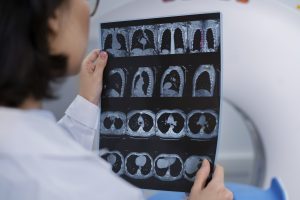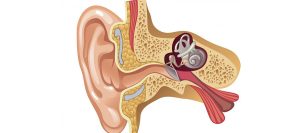Otitis Media & Ear Tubes
1. What is the condition about?
Otitis media refers to inflammation or infection of the middle ear, a common condition, especially in children. It occurs when the space behind the eardrum becomes filled with fluid and infected, leading to symptoms such as ear pain, hearing loss, and sometimes fever.

2. What are the causes?

Several factors can contribute to otitis media:
- Infections : Bacterial or viral infections, often following a cold, can lead to otitis media.
- Anatomy : Children are more susceptible due to their smaller and more horizontal Eustachian tubes,which can lead to fluid buildup.
- Allergies : Allergic reactions can cause inflammation in the middle ear.
- Exposure to Smoke : Secondhand smoke exposure can increase the risk, especially in children.
3.How Common Is the Condition?
4. What Can an ENT Specialist Do for You?
An ENT specialist can provide comprehensive care for otitis media :
The specialist will assess the condition’s severity through physical exams and possibly
tympanometry, which measures eardrum movement
Depending on the severity, treatment may include antibiotics, pain relief, and addressing underlying causes like allergies.
In some cases, especially recurrent or chronic otitis media, ear tubes (tympanostomy tubes)
may be recommended.
5. How Can the Condition Be Treated?
Treatment options for otitis media include:

Antibiotics
Bacterial infections are typically treated with antibiotics.

Pain Relief
Over-the-counter pain relievers or prescription ear drops can help alleviate discomfort.

Observation
In some cases, especially with mild symptoms, the ENT specialist may recommend watchful waiting.

Ear Tubes
For recurrent or chronic cases, the insertion of ear tubes may be considered.
6. Guidelines for Surgery
When ear tubes are recommended, the surgery involves the following:
- Preparation: Before the procedure, fasting may be required, and any current medications should be discussed with the healthcare provider.
- Anesthesia: The surgery is usually performed under general anesthesia, but local anesthesia with sedation can also be an option.
- Tube Insertion:An incision is made in the eardrum, and a tiny tube is inserted to allow for drainage and ventilation of the middle ear.
- Recovery: After a brief recovery period, most patients can return home the same day
7. Evaluation & Follow Up for Treatment
Regular follow-up appointments are essential to monitor the ear tubes’ effectiveness, ensure proper drainage, and assess the need for tube removal.
8.Risks of Surgery
Ear tube surgery is generally safe, but like any procedure, it carries some risks, including:
- Infection: Infection at the surgical site is possible.
- Tube Blockage: Tubes may become blocked, requiring removal or replacement.
- Perforation: Rarely, the eardrum may be perforated during surgery.
9.Alternatives to Surgery
For some cases, especially those with mild or infrequent otitis media, non-surgical approaches like watchful waiting, antibiotics, and addressing underlying causes may be explored as alternatives to surgery.
